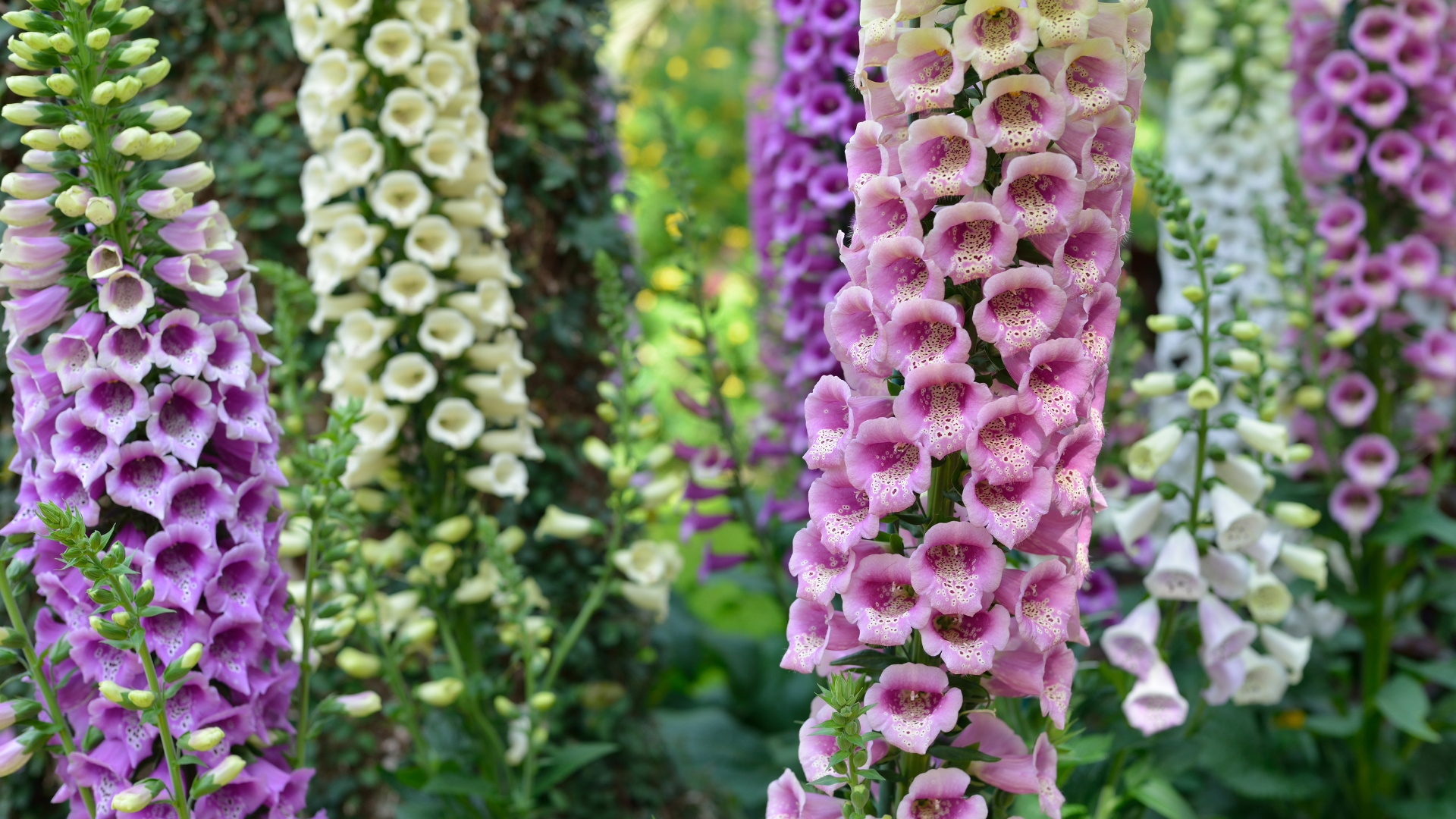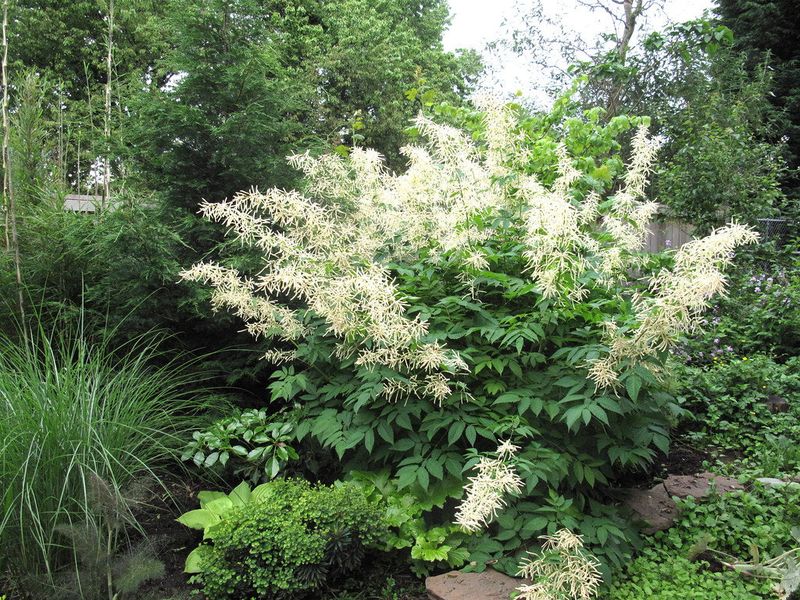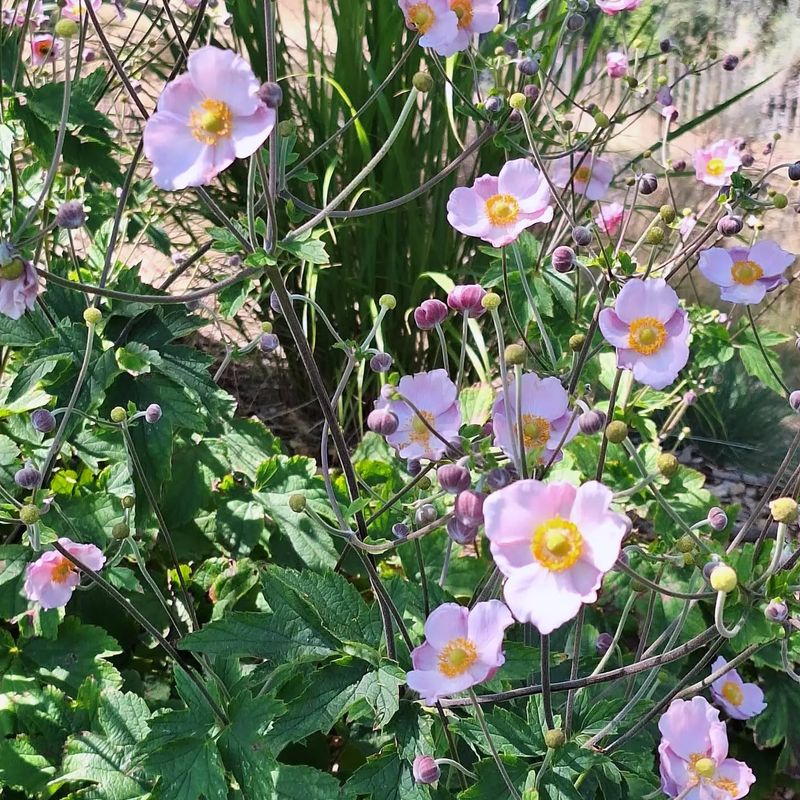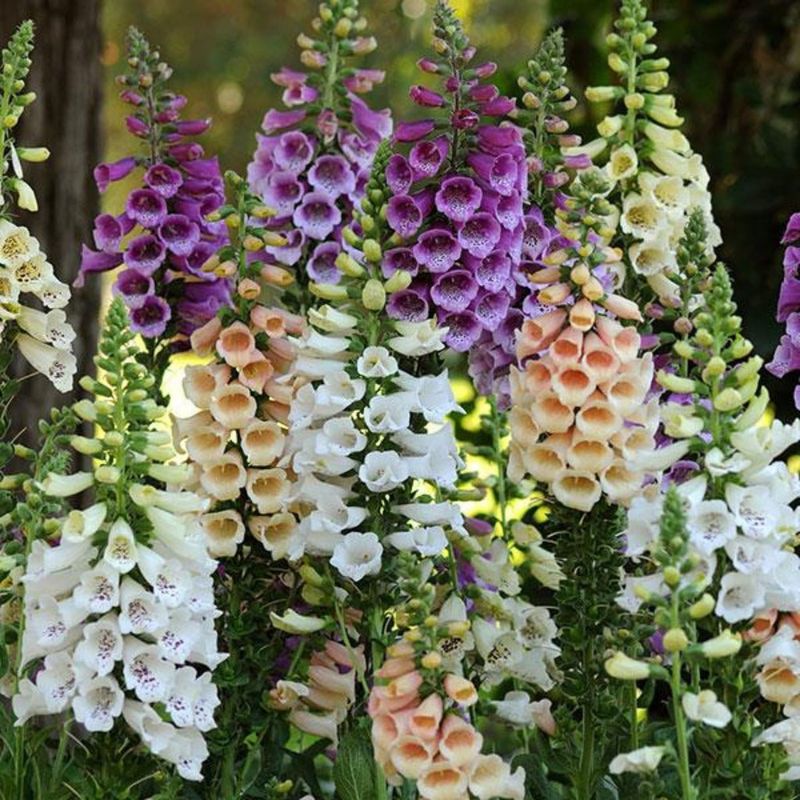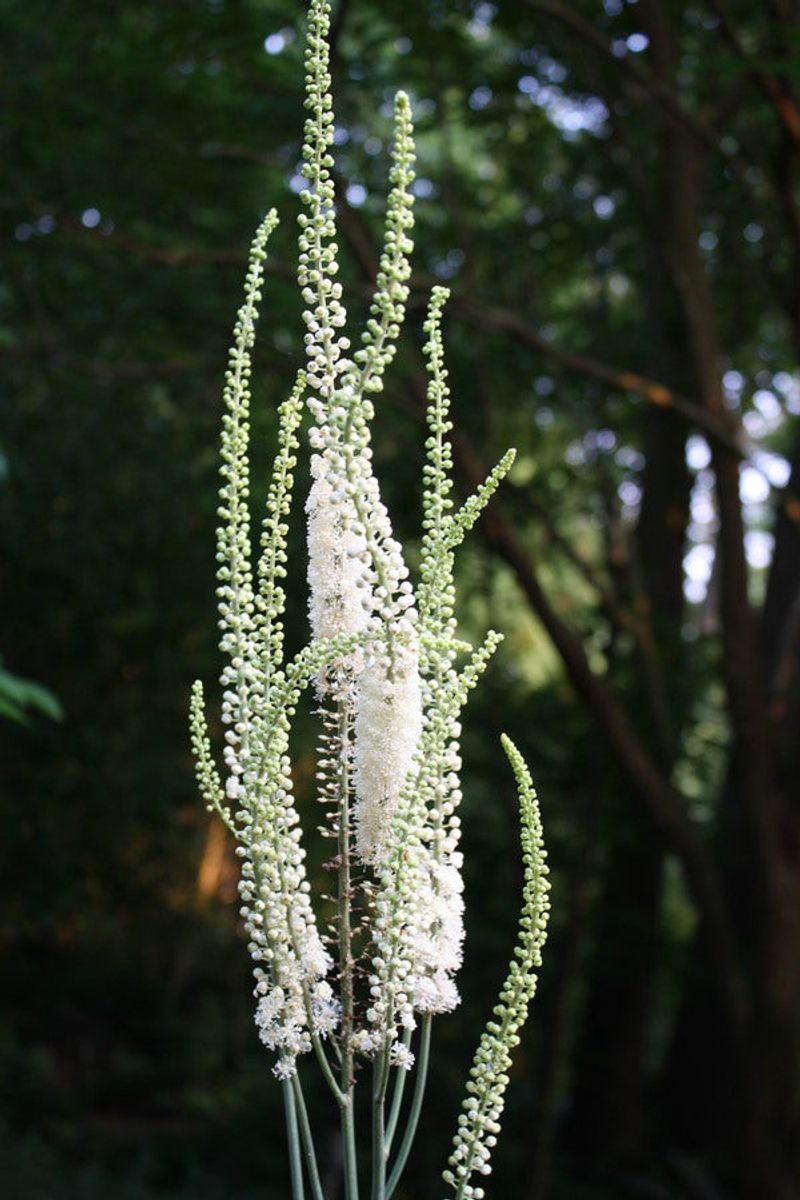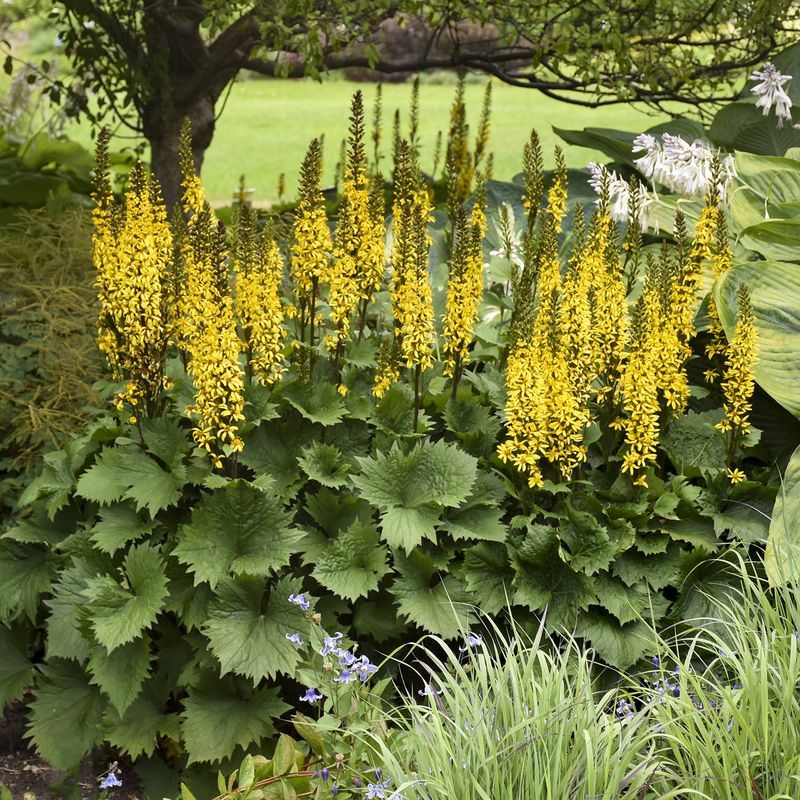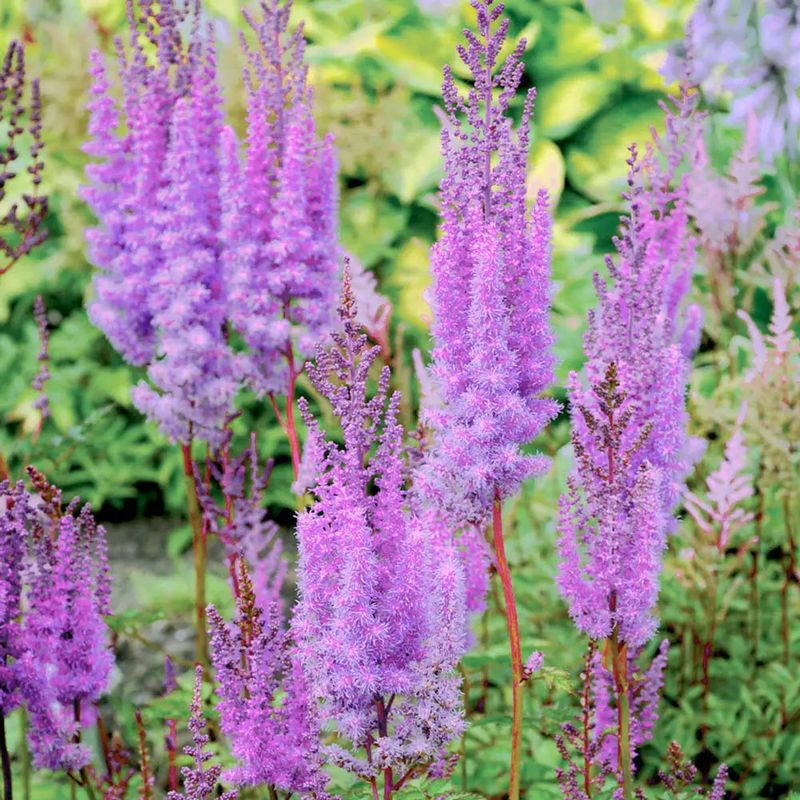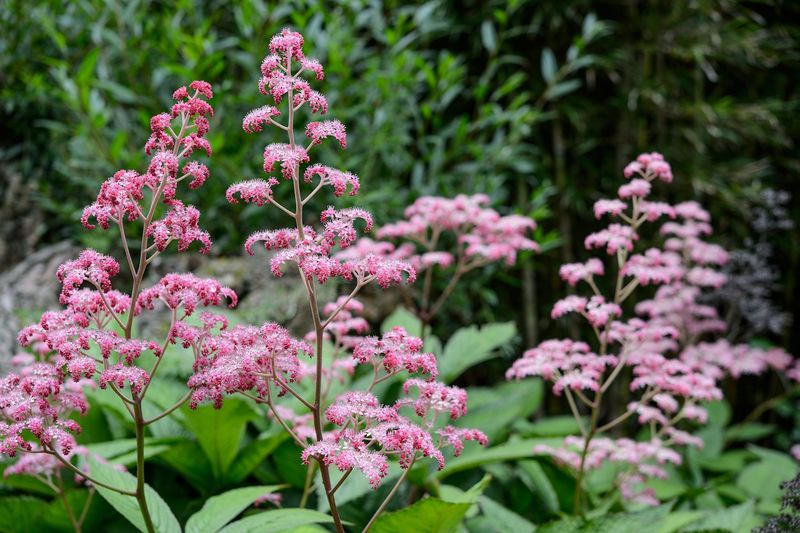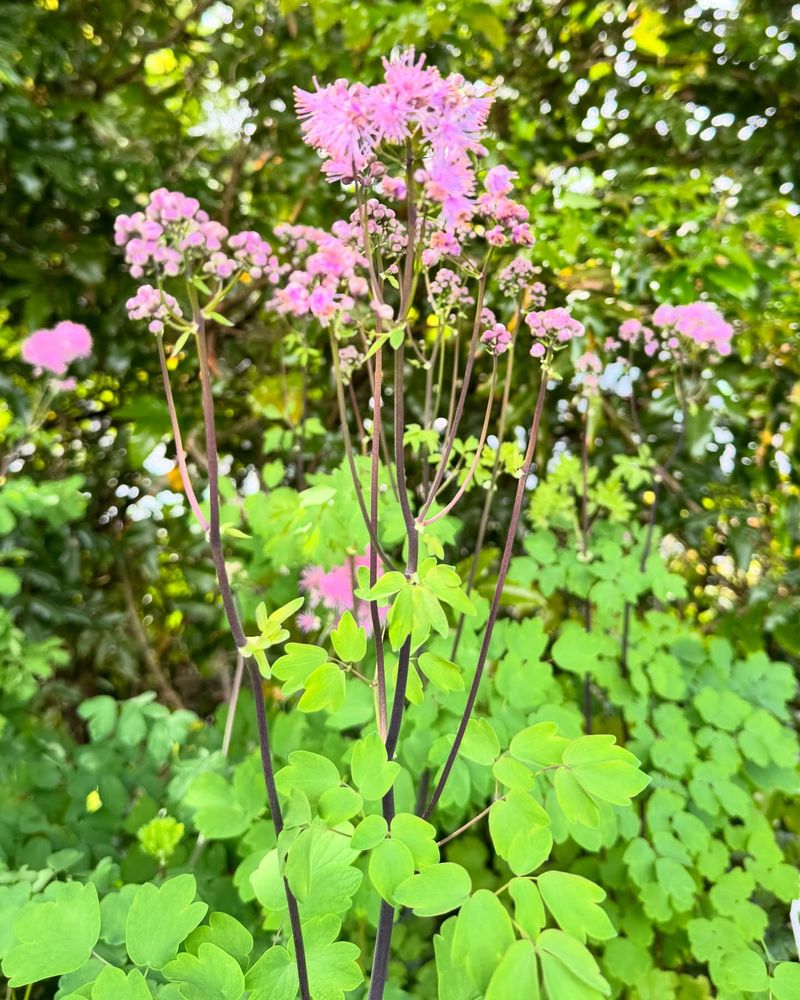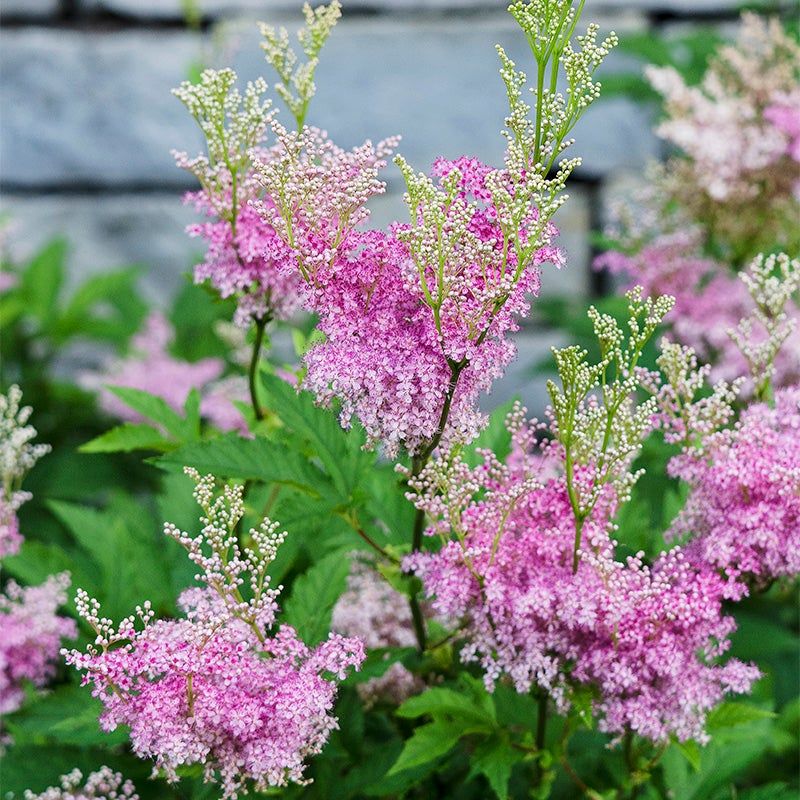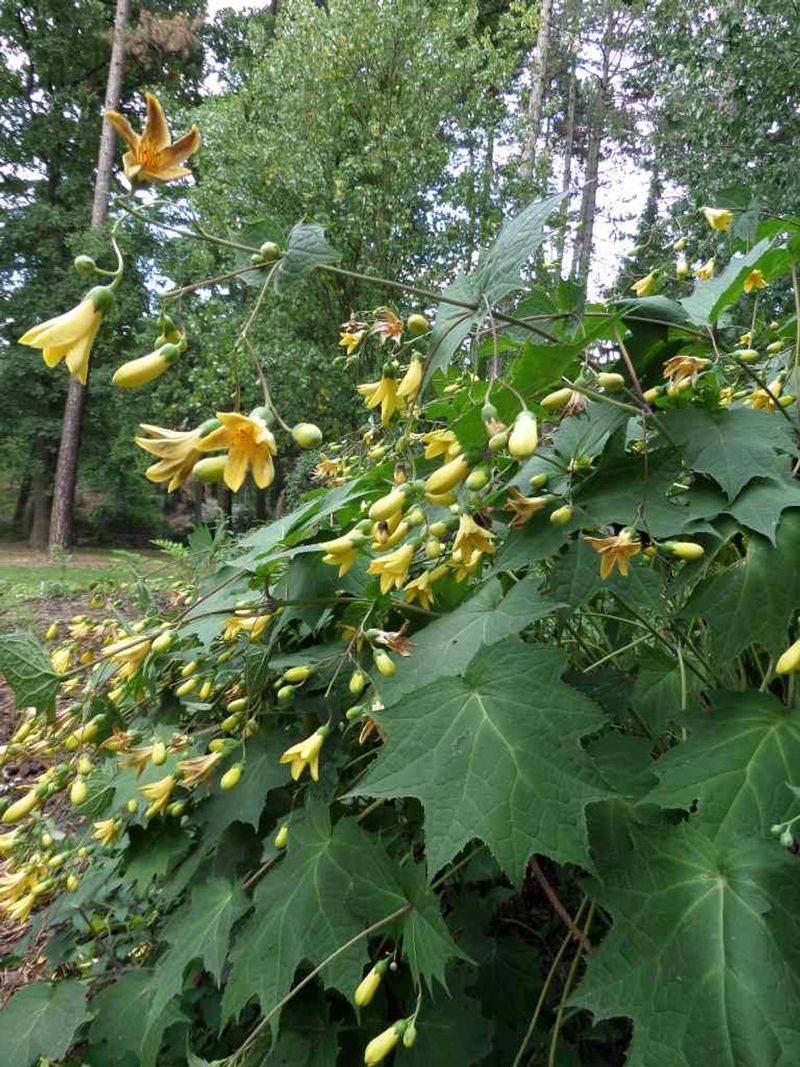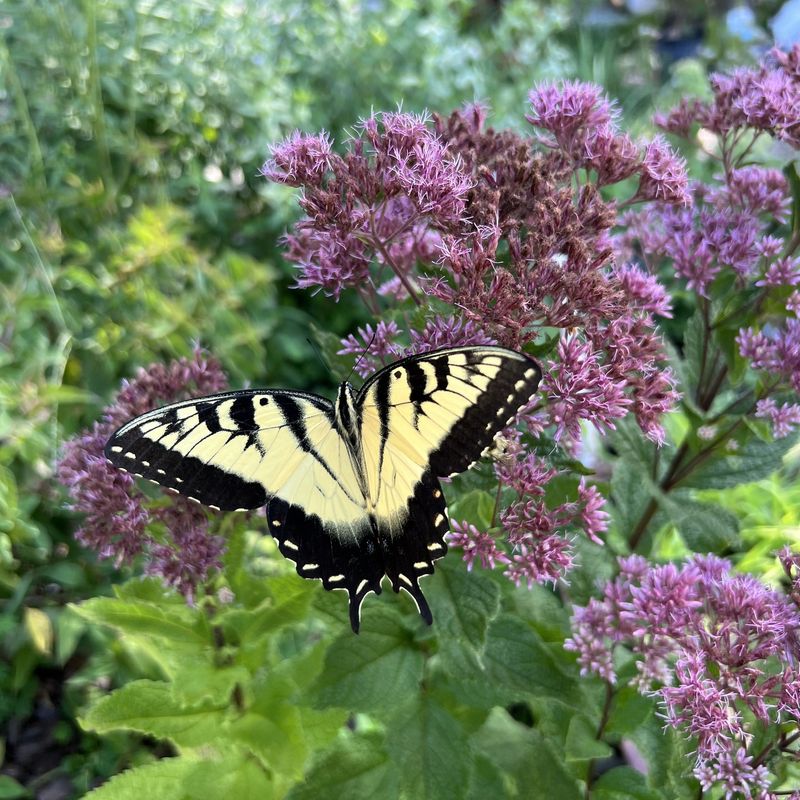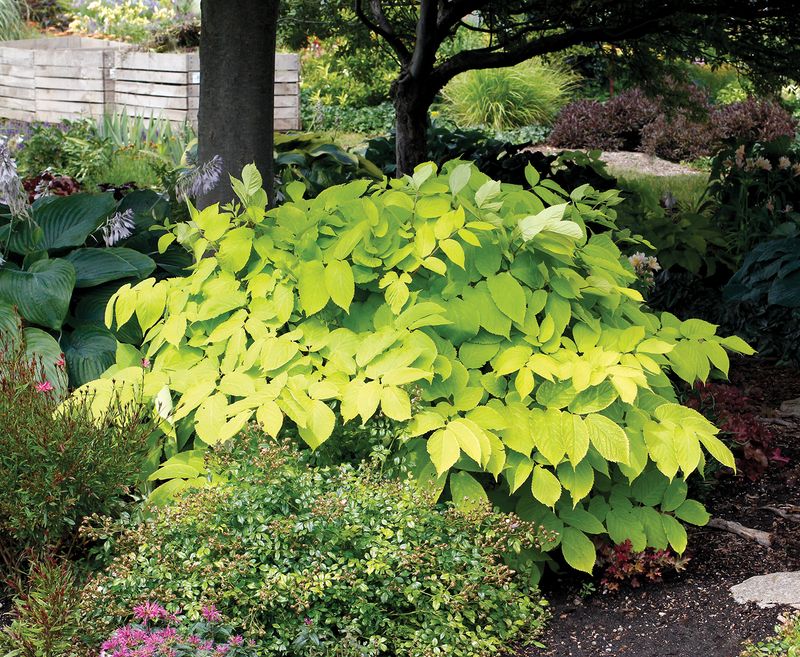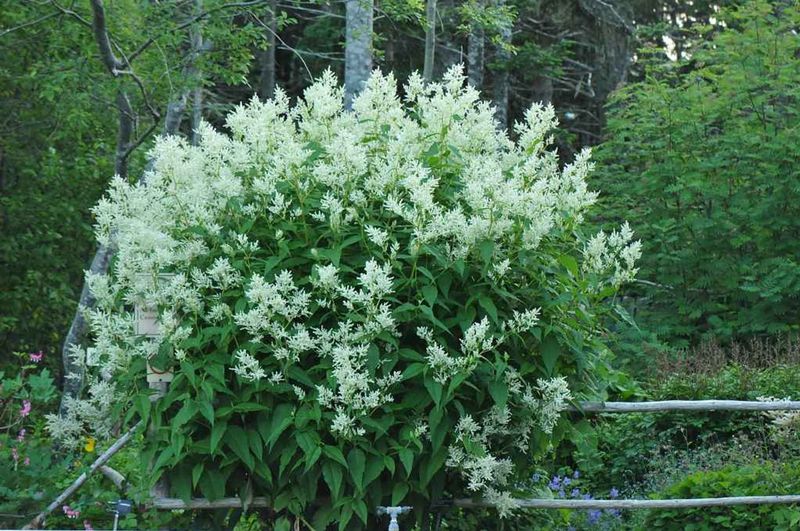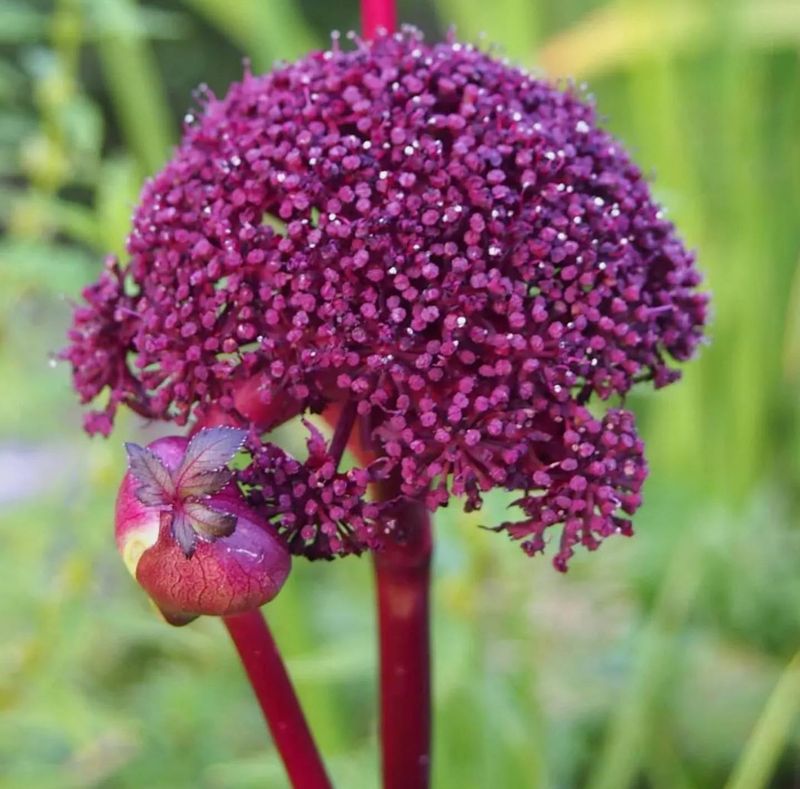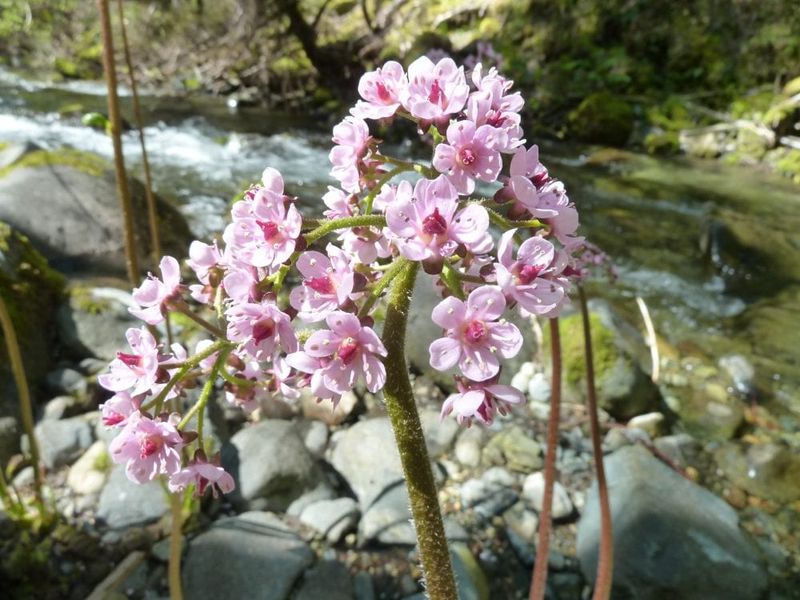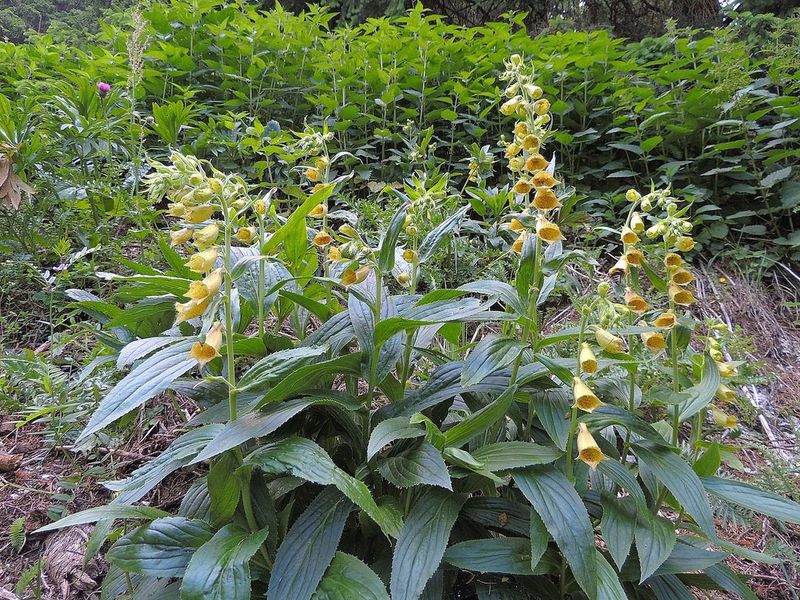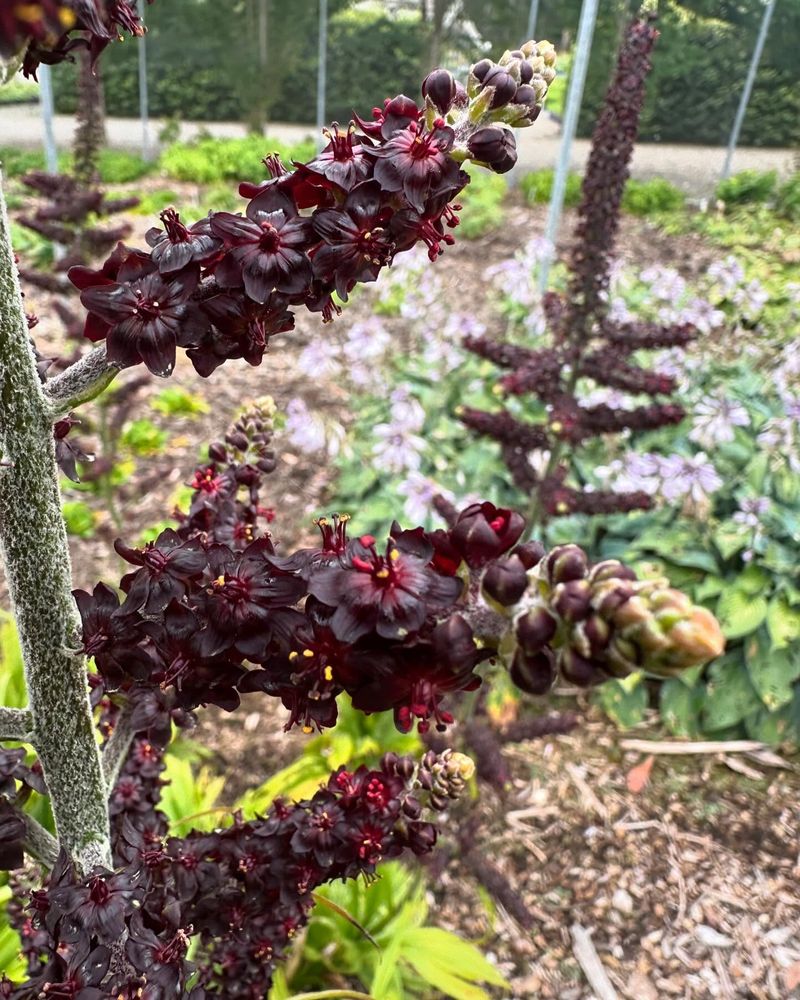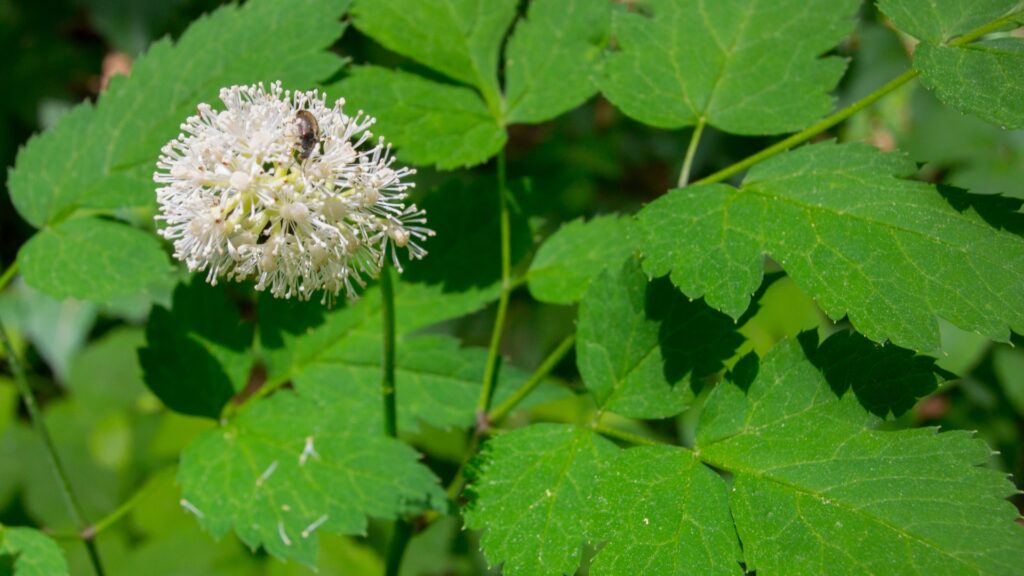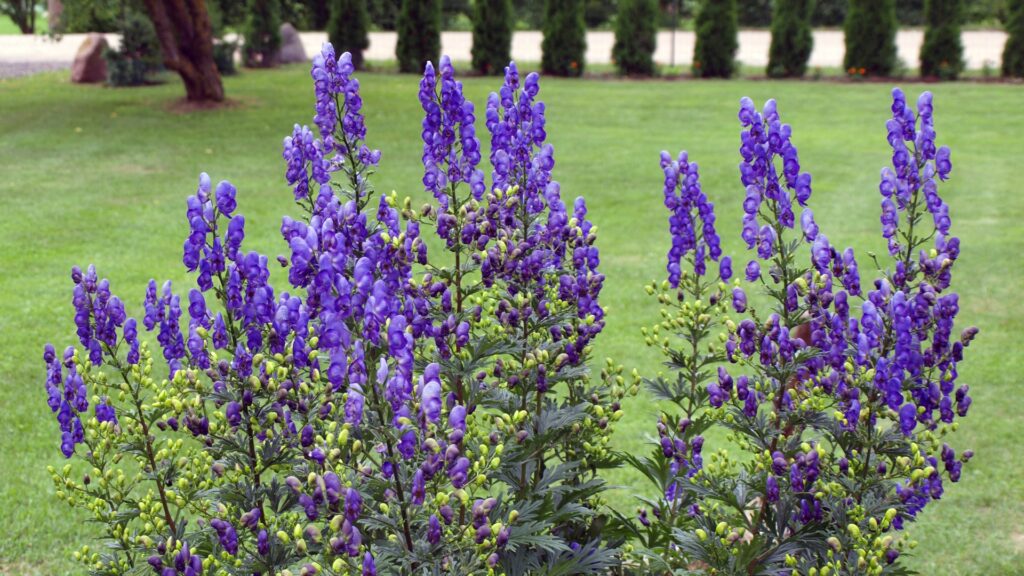Finding tall plants that thrive in shade can feel like chasing shadows—those dim corners often end up as barren eyesores. But shade doesn’t have to mean lifeless.
With the right perennials, you can add height, texture, and quiet drama. These elegant giants don’t just survive the shade—they own it.
1. Goat’s Beard
Growing up to 6 feet tall, this native woodland plant brings airy plumes of cream-colored flowers that seem to float above the foliage. The feathery blooms appear in early summer, creating a soft, cloud-like effect that brightens dark corners.
My neighbor planted these along her north-facing fence line, transforming a previously empty strip into a showstopper. The deeply cut foliage provides interest even when the plant isn’t flowering.
Goat’s Beard appreciates consistent moisture but won’t collapse if you forget to water it occasionally. I’ve found it pairs beautifully with ferns and hostas, creating layers of different textures in shade gardens.
2. Japanese Anemone
Late summer brings the graceful dance of Japanese Anemone flowers on stems that reach 3-4 feet high. These delicate pink or white blooms appear when most other perennials have finished their show, extending the garden season well into fall.
What surprises most gardeners is how these plants thrive in spots that get morning sun but afternoon shade. Last year, mine bloomed for nearly two months straight.
Once established, they form slowly expanding clumps that don’t need frequent division. The way they sway in the slightest breeze adds a sense of movement to otherwise static shade gardens.
3. Foxglove
The dramatic spires of Foxglove can reach an impressive 5 feet, creating vertical interest in areas that receive dappled light. Their tubular flowers in shades of purple, pink, white, and cream attract hummingbirds, bringing life to quiet shade gardens.
While technically biennials, they self-seed so readily that you’ll always have plants at different stages. The basal rosettes of fuzzy leaves remain attractive even when the plant isn’t flowering.
My woodland garden path is lined with these beauties that return year after year without any effort on my part. Just remember every part is toxic, so place them away from curious pets and children.
4. Cimicifuga (Bugbane)
Reaching 6-8 feet tall, Cimicifuga creates dramatic height with its bottle-brush white flower spires that seem to glow in the shadows. The dark purple or green foliage provides months of interest before the late-summer blooms even appear.
Despite its intimidating height, I’ve never had to stake mine – the stems remain remarkably sturdy through summer storms. The flowers emit a sweet fragrance that carries through the garden, especially in the evening.
Gardening friends often stop in their tracks when they spot these towering beauties in my shade border. They’ve become anchor plants that give structure to the garden throughout the seasons.
5. Ligularia
The bold, architectural leaves of Ligularia make a statement even before the 4-5 foot tall yellow flower spikes emerge in mid-summer. Some varieties feature round leaves as big as dinner plates, while others have serrated, jagged foliage that adds dramatic texture.
Water is key with these beauties—they’ll quickly let you know they’re thirsty by dramatically wilting. After a good soaking, they bounce back without lasting damage.
My ‘The Rocket’ variety has created a focal point in a particularly dark corner where the soil stays naturally moist. The contrast between the dark foliage and bright yellow flowers creates a spotlight effect in shade.
6. Astilbe
The feathery plumes of Astilbe add both height and airiness to shade gardens, with the tallest varieties reaching 4 feet. Their fluffy flower clusters come in shades from white to deep burgundy, creating different moods depending on the color you choose.
The fern-like foliage looks attractive all season, even after the flowers fade. Most gardeners don’t realize how tough these delicate-looking plants actually are once established.
A row of ‘Purple Candles’ Astilbe forms the backbone of my north-facing border, providing structure from spring through fall. They pair especially well with hostas, creating a perfect textural contrast between broad and finely-cut leaves.
7. Rodgersia
The palm-like, corrugated leaves of Rodgersia make a bold statement in shady spots, growing up to 6 feet wide and 4 feet tall. Pink or white flower plumes rise above the impressive foliage in early summer, attracting beneficial insects to the shade garden.
Bronze-tinged new growth adds another dimension of color before maturing to deep green. These plants appreciate consistent moisture and rich soil but reward minimal care with years of reliable growth.
After seeing them thrive in a botanical garden’s woodland section, I added three to my own shade garden. Their tropical appearance creates an unexpected lushness in northern gardens where tropical plants typically struggle.
8. Thalictrum (Meadow Rue)
Meadow Rue’s delicate, airy flowers belie its impressive height of up to 6 feet. The tiny lavender or white blooms appear to float above the garden on thin, dark stems, creating a gauzy cloud effect that softens shadier areas.
The blue-green foliage resembles columbine leaves and provides a beautiful backdrop for other shade plants. Despite their height, they rarely need staking thanks to those surprisingly sturdy stems.
My ‘Hewitt’s Double’ variety has become a garden favorite, with tiny puffball flowers that look like miniature lilacs hovering in mid-air. They’re perfect for adding height without visual weight to crowded shade borders.
9. Filipendula (Queen Of The Prairie)
Candy-floss pink plumes top the impressive 6-8 foot stems of Filipendula, creating a dramatic presence in partly shaded, moist areas. The deeply lobed maple-like leaves form a substantial clump at the base, providing structure even when the plant isn’t in bloom.
Contrary to their delicate appearance, these plants are surprisingly tough once established. My specimen has weathered drought, late freezes, and even an accidental weed-whacker incident.
The flowers dry beautifully on the stem, extending the season of interest well into winter. I’ve found they make excellent backdrop plants for shade gardens, especially alongside streams or in rain gardens where they can access consistent moisture.
10. Kirengeshoma (Yellow Waxbells)
Reaching 3-4 feet tall, Kirengeshoma brings architectural form to the shade garden with its maple-like leaves and unusual waxy yellow bell flowers. The blooms appear in late summer when the garden often needs a fresh focal point.
Native to woodland areas of Japan and Korea, these perennials have a distinctly exotic appearance that belies their hardiness. They form slowly expanding clumps that don’t require frequent division.
After spotting them at a specialty nursery, I added three to a troublesome dry shade area. To my surprise, they’ve thrived with just occasional deep watering, proving more adaptable than their exotic appearance suggests.
11. Eupatorium (Joe Pye Weed)
The majestic domes of dusty mauve flowers on Joe Pye Weed can reach an impressive 7 feet tall in partial shade. These native plants attract countless butterflies, bringing movement and life to otherwise still shade gardens.
Newer compact varieties like ‘Little Joe’ still reach 4 feet but fit better in smaller gardens. The stems develop an attractive purple flush that complements the flowers and adds winter interest.
My stand of Joe Pye has become a reliable late-summer highlight, especially valuable because it blooms when many shade plants have finished their show. They require almost no maintenance beyond cutting back in spring.
12. Aralia ‘Sun King’
Bringing a splash of gold to the shade garden, ‘Sun King’ Aralia grows to 4-5 feet tall and nearly as wide. The compound leaves glow with chartreuse-gold color that brightens even the darkest corners, especially when placed where they can catch filtered morning light.
White flower spikes appear in late summer, followed by decorative purple-black berries that attract birds. Unlike many gold-leaved plants, it doesn’t burn in morning sun or revert to green in deep shade.
After adding one to my north-facing foundation planting three years ago, it’s become the centerpiece that makes the whole bed work. The golden foliage makes neighboring plants with darker leaves look even richer by contrast.
13. Persicaria Polymorpha
Often called Giant Fleeceflower, this magnificent perennial rockets to 6-7 feet in a single season, creating an instant focal point. Fluffy white plumes appear in early summer and remain attractive for months, gradually shifting to creamy tan as they age.
Despite its imposing size, it forms a well-behaved clump that doesn’t spread aggressively like some of its relatives. The bright green leaves emerge early and remain attractive until frost.
A garden visitor gave me a tiny division five years ago, and it now commands attention at the back of my part-shade border. It combines beautifully with plants that have darker foliage, creating dramatic contrast.
14. Angelica Gigas
Korean Angelica creates architectural drama with its deep burgundy-purple domed flower heads reaching 6 feet tall. The massive umbels attract countless pollinators, bringing buzzing activity to shady garden corners where insects often seem scarce.
Though technically biennial, it self-seeds reliably without becoming invasive. The deeply cut foliage forms an attractive basal rosette in the first year before sending up flowering stems in the second.
I planted three seedlings in a staggered pattern to ensure yearly blooms as different plants reach maturity. Their near-black stems and flower buds create striking vertical elements that contrast beautifully with lighter-colored shade plants.
15. Darmera Peltata
Umbrella Plant makes a bold statement with dinner-plate sized circular leaves that can reach 2 feet across on 3-foot stems. Clusters of pink flowers appear on separate 5-foot stalks in early spring before the leaves emerge, creating an unusual and eye-catching display.
The leaves develop beautiful red and bronze tones in fall, extending the season of interest. Native to stream banks in western North America, it thrives in consistently moist soil but can handle drier conditions than you might expect.
My specimen grows alongside a garden path where its massive leaves create a tropical effect in a decidedly non-tropical climate. Visitors can’t resist touching the umbrella-like foliage that sheds water in fascinating patterns during rain.
16. Digitalis Grandiflora
Unlike its biennial cousins, Perennial Foxglove returns reliably year after year, sending up 3-4 foot spires of soft yellow tubular flowers. The blooms are more widely spaced than common foxglove, giving the plants an elegant, less crowded appearance.
These woodland natives tolerate deeper shade than most foxgloves while still flowering prolifically. The glossy, dark green leaves form an attractive semi-evergreen rosette that provides winter interest in milder climates.
A patch started from just three plants has gradually expanded in my woodland garden, creating a reliable vertical element among ferns and hostas. Hummingbirds visit the flowers regularly, adding movement to the shady garden scene.
17. Veratrum Nigrum
Black False Hellebore creates a commanding presence with its deeply pleated leaves and 4-5 foot tall flower spikes bearing star-shaped black-purple blooms. The foliage emerges early in spring, forming a substantial architectural clump that provides structure all season.
Though slow to establish, these plants are extremely long-lived, potentially lasting decades in the right conditions. Every part is highly toxic, which makes them naturally deer and rabbit resistant.
After admiring one in a botanical garden, I splurged on a specimen for a troublesome dry shade area. Five years later, it’s become the anchor plant that makes the whole border work, drawing the eye with its unusual coloration and strong vertical form.
18. Actaea Pachypoda (White Baneberry)
Also known as Doll’s Eyes, this hauntingly beautiful native reaches 3-4 feet tall and brings late-spring interest to the shade garden. Its finely divided, lacy foliage gives way to upright racemes of fluffy white flowers that resemble miniature bottle brushes.
By midsummer, the real show begins—bright white berries with contrasting black dots form on striking red stems, creating an eerie, eye-catching display that earns the plant its nickname. While the berries are toxic, they’re left untouched by wildlife and serve purely ornamental purposes.
I planted a few at the edge of a wooded path, where their unusual fruit stops visitors in their tracks. Their elegant leaves blend effortlessly with ferns and woodland geraniums, but the berries are what really seal the deal each season.
19. Aconitum Carmichaelii (Monkshood)
For rich, cobalt-blue blooms in late summer and fall, nothing rivals Monkshood. These stately perennials can stretch up to 5 feet tall, bringing strong vertical lines and vivid color to shady areas when most other plants are winding down.
The deeply lobed foliage resembles that of delphiniums, and the flower spikes are impressively upright, rarely needing staking. It thrives in cool, moist soils and looks especially dramatic against lighter foliage or along woodland borders.
I added a row along the shadier side of my tool shed, where they bloom reliably each year with little effort. Their intense color draws the eye from across the garden, offering a rare shade-tolerant blue that’s both bold and refined. Just be cautious—like many shade lovers, they’re highly toxic if ingested.

